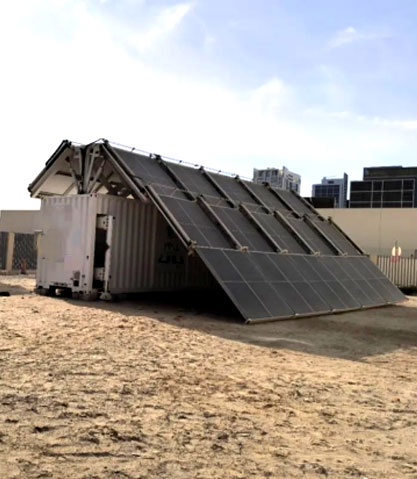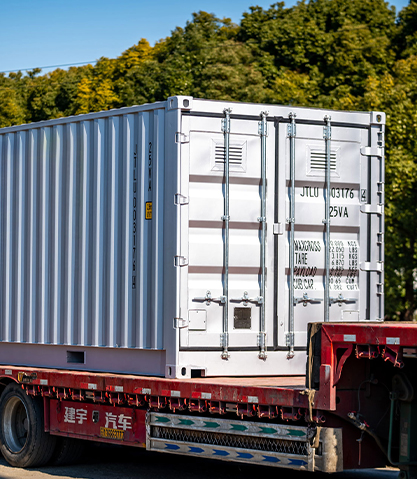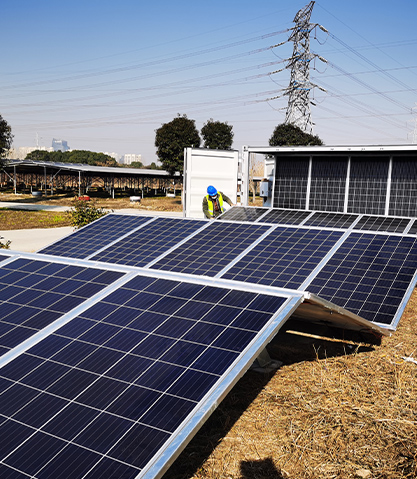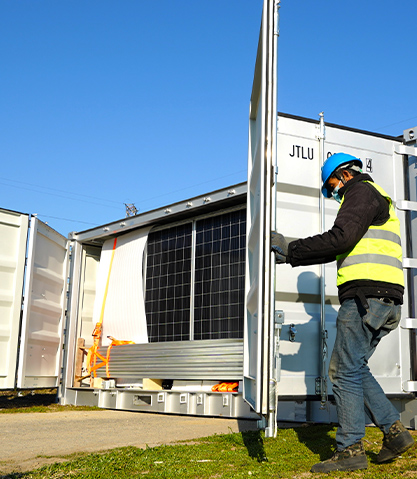In an era where energy resilience and sustainability are more critical than ever, the Mobile Solar Power Container is emerging as an intelligent solution that integrates mobility, clean energy generation, and storage capabilities. Designed for rapid deployment and all-terrain applications, this self-contained solar system delivers reliable off-grid power to areas where conventional infrastructure is limited, damaged, or non-existent.
What is a Mobile Solar Power Container?
A Mobile Solar Power Container is a modular, transportable energy unit built within a standard shipping container. It typically includes:
High-efficiency solar panels (often foldable or retractable for transport)
Integrated lithium battery energy storage
Charge controllers and inverters
Optional diesel backup generators or hybrid modules
Climate control, monitoring, and protective enclosures
Its containerized structure allows for easy loading, transport, and quick commissioning in the field. Once deployed, the solar panels are unfolded or extended, enabling the system to begin generating power immediately.
Key Advantages for End Users
1. Rapid Deployment and Mobility
Designed for transportation by truck, rail, or cargo ship, these units can be set up within a few hours. This makes them ideal for disaster relief, military operations, construction sites, and temporary event power.
2. Off-Grid Independence
Mobile solar containers enable total off-grid operation, providing power in locations with no utility grid or where grid access is unreliable. This is essential for rural development projects, refugee camps, and remote industrial facilities.
3. Clean, Renewable Energy
Unlike diesel generators, solar-powered containers reduce carbon emissions, noise, and fuel costs. Over time, users benefit from significant savings and a lower environmental footprint.
4. Scalability and Customization
These units can be custom-designed to meet different power demands, typically ranging from 5 kW to over 100 kW. They support AC and DC output, and can be scaled through parallel installation to support growing energy needs.
5. Energy Storage Integration
Equipped with high-capacity lithium or LFP (lithium iron phosphate) batteries, the system ensures round-the-clock power availability, even during non-sunlight hours. Some models include intelligent energy management systems for optimized power distribution.
Applications Across Diverse Fields
The flexibility of Mobile Solar Power Containers makes them applicable across a wide range of sectors:
Disaster Response and Humanitarian Aid: Provide emergency power for medical facilities, shelters, and communications during natural disasters.
Military and Defense: Enable quiet, fuel-free operations in remote or tactical locations.
Construction and Mining: Supply consistent energy to off-grid job sites, reducing the need for fuel logistics.
Telecommunications: Power remote towers and equipment in isolated areas.
Agriculture: Support irrigation, lighting, and refrigeration in rural farming zones.
Events and Exhibitions: Offer temporary green energy solutions for outdoor gatherings and performances.

Technological Innovations
Recent advances have made mobile solar containers more efficient, durable, and intelligent:
MPPT (Maximum Power Point Tracking) controllers for improved solar harvest
Remote monitoring platforms with real-time data and diagnostics
AI-based energy management systems for load balancing and forecasting
Anti-theft and weather-resistant design for harsh field environments
Some models also incorporate dual energy sources, combining solar with diesel, biogas, or hydrogen fuel cells for hybrid reliability in extreme weather conditions or limited sunlight.
Economic and Environmental Impact
For both governments and private enterprises, mobile solar containers present a cost-effective alternative to diesel-based generators. They eliminate recurring fuel expenses, reduce dependency on complex supply chains, and qualify for green energy incentives and carbon credit programs in many countries.
Moreover, their deployment supports United Nations Sustainable Development Goals (SDGs) by enhancing energy access, reducing greenhouse gas emissions, and strengthening infrastructure resilience.
Future Outlook
As demand for mobile, scalable, and low-emission power grows globally—particularly in regions facing energy poverty or climate disasters—Mobile Solar Power Containers are positioned to play a transformative role. With ongoing improvements in battery technology, container design, and IoT-based energy management, these units are becoming even more compact, intelligent, and powerful.
Governments, NGOs, and forward-thinking companies are increasingly investing in this technology not just as a short-term power fix, but as a long-term strategy for decentralized, sustainable energy deployment.
Conclusion
The Mobile Solar Power Container is not just a temporary energy source—it’s a versatile, clean power solution for a world in need of resilient infrastructure. Whether addressing humanitarian crises, powering remote industries, or reducing emissions at construction sites, this technology offers reliability, efficiency, and environmental responsibility in a single, mobile platform.
As the global energy landscape shifts toward decarbonization and decentralization, mobile solar power containers are leading the way—bringing light and power wherever they’re needed most.

 English
English 中文简体
中文简体 عربى
عربى



